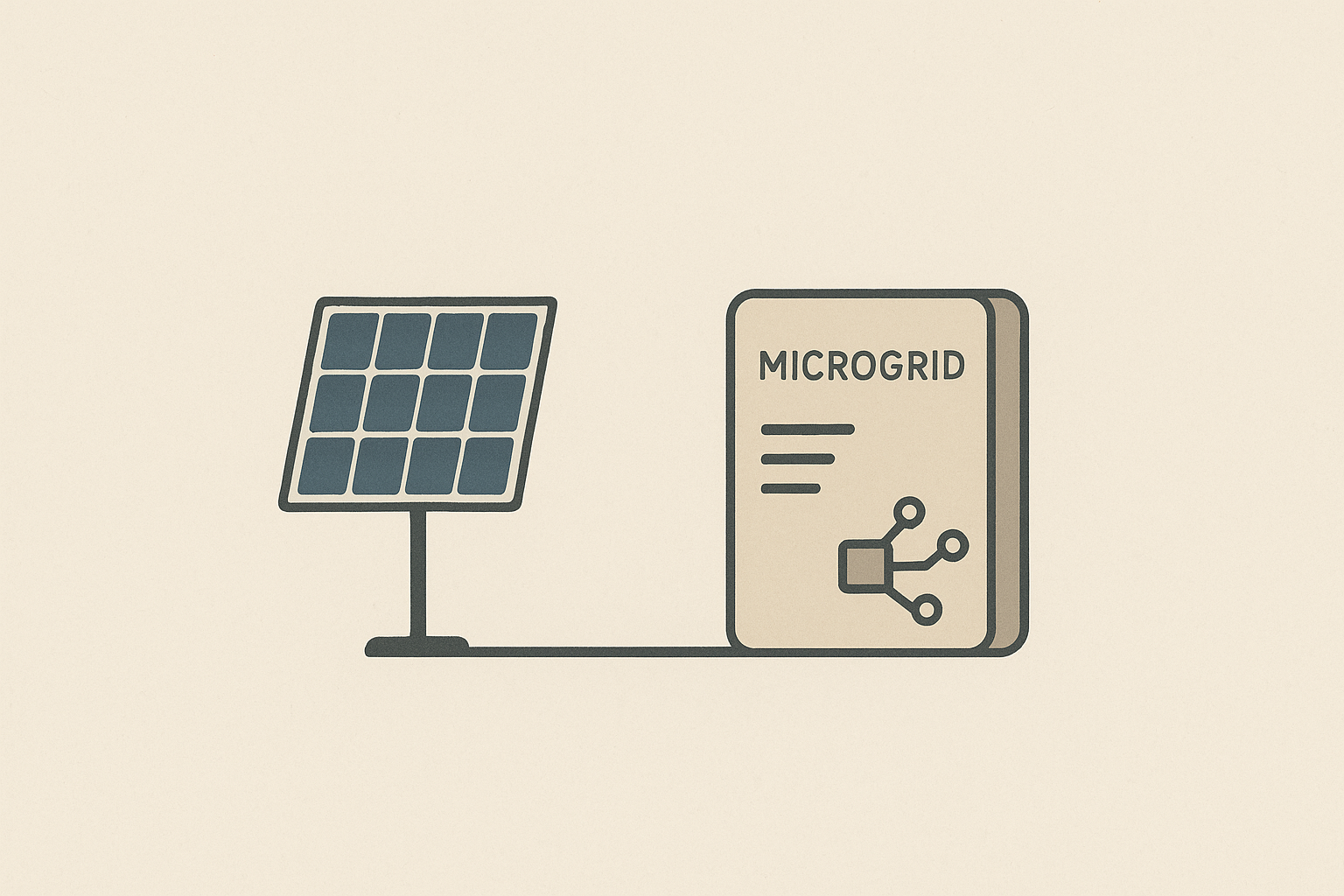Energy-Aware Software Engineering: A Practical Framework for Low-Carbon, Efficient Systems
Reduce operational carbon by design, measure impact, and monetise energy efficiency in software.

Why energy-aware software engineering matters, and why it is evergreen
Software consumes energy throughout its life cycle, from development machines to production servers, edge devices, and user devices. As organisations commit to lower carbon footprints, software and infrastructure teams must treat energy as a first-class design constraint, the same way they treat latency, reliability and cost. This article provides a practical, durable framework for building energy-aware systems, two robust implementation strategies, code and tooling examples you can adapt, and sustainable business models that align incentives with long-term environmental goals.
Did You Know?
Data centre electricity use grows with compute demand, and improving software efficiency is one of the most direct levers to reduce that demand. Governments in the UK have set long-term carbon goals, which makes engineering energy efficiency a strategic asset for businesses and public sector organisations, not a temporary compliance exercise. See the UK Net Zero Strategy for the policy context and long-term commitment here.
Define the Evergreen Challenge
The practical, long-term problem is this, organisations must deliver digital services that meet functional requirements while minimising energy consumption, carbon output and total cost of ownership over multi-year horizons. Constraints include legacy systems, distributed infrastructure, varied developer skill sets, and the need to preserve user experience. The challenge is evergreen because energy budgets and carbon constraints will persist, and new hardware or cloud price changes will not eliminate the need for energy-conscious software design.
Core goals for a durable energy-aware programme
- Measure and attribute energy consumption to software components; avoid estimates where precise measures are feasible.
- Design for efficiency across the stack, from algorithms to deployment patterns.
- Integrate energy considerations into engineering workflows, CI/CD and SRE playbooks.
- Align commercial models with energy performance, by incentivising efficient behaviour in customers and internal teams.
Two evergreen, practical solution frameworks
The following two strategies complement each other. One is technical and operational, designed for engineering teams that control the software stack. The other is strategic and commercial, suitable for founders, product managers and business leaders seeking sustainable models that scale.
Solution A: The Engineered Efficiency Framework, a technical, repeatable approach
Overview, create a closed-loop engineering system that measures energy proxies, tests for efficiency regressions, optimises runtime behaviour and schedules compute for carbon sensitivity where possible. This framework fits organisations running cloud, hybrid cloud or on-premise systems.
Step-by-step implementation
- Establish measurement and observability
Start with metrics that are reliable and easy to collect. True power meters per server are ideal where available; most teams will begin with proxies such as CPU time, CPU frequency, GPU utilisation, memory usage, disk IO and network throughput. Expose these as application-level and host-level metrics using Prometheus exporters or equivalent.
Example initial metric set
- process_cpu_seconds_total
- node_cpu_seconds_total per core
- process_memory_bytes
- container_cpu_usage_seconds_total
- disk_io_time_seconds_total
Step-by-step, add labels to attribute metrics to service, component, request-path and customer where relevant. This is essential to allocate responsibility and to evaluate optimisation ROI.
- Build a baseline and continuous profiling pipeline
Run workload simulations representing steady-state and peak traffic. Use continuous profiling tools to capture CPU hotspots and allocation patterns. Store profiles and make them queryable, so teams can compare performance across releases.
- Introduce efficiency gates into CI
Add tests that fail a build when energy proxies regress beyond defined thresholds. For example, reject a pull request if CPU time per request increases by more than 5 per cent for a critical endpoint. Use historical medians to reduce noise.
- Optimise at the appropriate layer
Optimisation work should follow the rule of diminishing returns; treat the stack holistically:
- Algorithmic level: improve complexity where hotspots exist, cache appropriately, replace synchronous work with batched operations.
- Language and runtime: use runtime features that lower CPU or memory usage; for example, reuse buffers, prefer streaming over materialisation, choose languages with lower runtime overhead where appropriate.
- Infrastructure: right-size instances, use energy-efficient instance types, prefer ARM or specialised silicon where it lowers energy per operation.
- Deployment: use auto-scaling policies sensitive to energy and cost metrics, not only request-per-second.
- Carbon-aware scheduling and workload placement
For non-latency-critical batch jobs, schedule compute to periods and regions with lower grid carbon intensity. Many public clouds provide region-level carbon-related indicators. Implement flexible scheduling that can defer non-critical work.
Step-by-step example below demonstrates a simple carbon-aware scheduler that defers a job until the configured carbon index threshold is satisfied. Use it as a pattern; the code is intentionally simple and portable.
<!-- Python 3 example: basic carbon-aware scheduler -->
import time
import requests
CARBON_THRESHOLD = 150 # grams CO2 per kWh, configure per policy
SLEEP_INTERVAL = 300 # seconds
def fetch_carbon_index():
# Replace with a real API or a configured provider adapter
# This placeholder returns a simulated index
try:
resp = requests.get('https://api.example.org/carbon_index')
resp.raise_for_status()
data = resp.json()
return data.get('carbon_intensity_gCO2_per_kWh')
except Exception:
# Fallback to conservative assumption
return 300
def schedule_job(job_fn, max_delay_hours=6):
deadline = time.time() + max_delay_hours * 3600
while time.time() <= deadline:
index = fetch_carbon_index()
if index <= CARBON_THRESHOLD:
return job_fn()
time.sleep(SLEEP_INTERVAL)
# Deadline reached, run anyway
return job_fn()
# Usage example
if __name__ == '__main__':
def sample_job():
print('Running batch work')
# heavy CPU task simulation
time.sleep(2)
return 'done'
result = schedule_job(sample_job)
print(result)
Notes, replace the example API with your provider, or compute an estimate from historical regional grid profiles. The approach is evergreen because the scheduling policy, thresholds and scheduling window remain relevant regardless of specific APIs or grid changes.
- Automate remediation and communicate impact
When gates detect regressions, the CI system should present a remediation plan: link to profiles, suggested code changes, and an estimated energy/cost delta. Also expose dashboards that report energy per transaction, aggregated for product owners and executives.
Operational checklist for teams
- Instrument production and staging with the same metric schema.
- Run profiles for every major change and store artifacts for auditing.
- Create runbooks for energy incidents; treat dramatic increases as P1 events.
- Use canary releases to verify energy behaviour before full rollout.
Pro Tip: Start with the highest-traffic, highest-cost services. Small percentage improvements here yield outsized energy and cost reductions. Use sampling for low-traffic endpoints to avoid measurement overhead.
Solution B: The Sustainable SaaS Business Model, an evergreen commercial approach
Overview, shift product and pricing strategy to reward efficiency and transparency. Business models that bake in energy metrics strengthen customer trust and create long-term differentiation, especially in markets where procurement demands environmental credentials.
Two practical commercial strategies
- Energy-aware pricing and SLA credits
Create pricing tiers with explicit energy efficiency targets, for example lower per-request charges when customers opt into energy-optimised modes or agree to flexible scheduling. Offer SLA credits when you cannot meet promised energy-related guarantees.
- Carbon transparency and verification
Publish audited energy and carbon reports for multi-year comparisons. Tie these reports into procurement-ready artefacts so customers can use them in sustainability assessments. This builds enterprise trust and reduces procurement friction.
Step-by-step for product managers and founders
- Define measurable energy KPIs for product features, for example gCO2 per 1000 requests, or kWh per GB processed.
- Instrument and collect data; do not use unverifiable estimates for customer-facing claims.
- Design a pricing experiment; run a controlled pilot offering an 'efficiency mode' with a discounted rate in exchange for deferred processing windows.
- Create clear SLOs for both performance and energy; communicate trade-offs to customers up-front.
- Offer a sustainability dashboard for customers; include recommendations to reduce their energy footprint while using your product.
Simple financial blueprint
Assume a SaaS product with annual revenue R, hosting costs H and expected energy reduction E from optimisation. Conservative modelling shows that a 10 per cent energy reduction on hosting costs often translates to a visible margin improvement, and when coupled with premium pricing for guaranteed green workloads, it can increase ARPU.
# Simplified annual model
R = 1_000_000 # revenue
H = 200_000 # hosting and infra costs
E = 0.10 # energy efficiency improvement
host_saving = H * E
new_margin = (R - (H - host_saving)) / R
print('Host saving', host_saving)
print('New margin', new_margin)
This model remains relevant because it relies on ratio analysis and percentages, not specific price points that change with time.
Q&A: Consider whether to pass savings to customers, keep them as margin, or share them. A durable approach is tiered sharing; early adopter customers receive discounts or credits, while general customers benefit from lower base prices over time.
Technical examples and patterns you can adopt today
Below are practical, reusable patterns with code sketches and configuration ideas you can drop into your pipeline and product roadmap.
1. Lightweight per-request energy proxy middleware (Node.js)
Use this middleware to capture CPU time and memory delta per request, emitting metrics to your monitoring system. It is portable and works with containerised workloads.
// Node.js Express middleware, simple energy proxy emitter
const { performance } = require('perf_hooks');
function energyProxyMiddleware(metricsEmitter) {
return function (req, res, next) {
const startCpu = process.cpuUsage();
const startTime = performance.now();
const startMem = process.memoryUsage().rss;
res.on('finish', () => {
const durationMs = performance.now() - startTime;
const cpu = process.cpuUsage(startCpu);
const cpuUserMs = (cpu.user + cpu.system) / 1000; // microseconds to ms
const memDelta = process.memoryUsage().rss - startMem;
const metric = {
path: req.path,
method: req.method,
status: res.statusCode,
duration_ms: durationMs,
cpu_ms: cpuUserMs,
mem_delta_bytes: memDelta,
};
metricsEmitter.emit('energy.proxy', metric);
});
next();
};
}
module.exports = energyProxyMiddleware;
Use the emitted metrics to estimate relative energy per request, and place regression gates in CI that compare current PRs against branch base. Accuracy improves when combined with host-level power metrics.
2. CI gate for efficiency, concept and implementation
Integrate a performance job in CI that runs a reproducible workload, collects the per-request proxy above, and compares aggregates against thresholds. If CPU per request or latency increases beyond threshold, fail the build with a descriptive report including a flamegraph link.
Organisational change and governance
Technical measures fail without organisational backing. Create an energy governance board that includes engineering, product, procurement and finance. The board owns the energy KPI definitions, thresholds and reporting cadence. They should review quarterly and set year-on-year efficiency targets. Link these KPIs to engineering performance reviews in a balanced way; do not create incentives that damage user experience or security.
Procurement and supply chain
Include energy efficiency criteria in vendor selection. Ask cloud providers for region-level energy and carbon metrics, hardware refresh cycles, and energy efficiency certifications. Ensure contracts include clauses for energy transparency and data portability for audits.
How this links to infrastructure-level control systems
Software-level energy optimisation benefits from system-level control and orchestration. For deeper integration, coordinate with infrastructure teams to enable workload placement and hardware choice optimisations. For practical reference on designing control systems that coordinate distributed renewables and smart farms, see the operational system design patterns discussed in Designing Future-Proof Control Systems for Distributed Renewables and Smart Farms. The same coordination patterns apply to scheduling compute across regions and edge locations.
Measurement, verification and reporting
Reporting must be auditable and repeatable. Use time-series databases for metric storage, store profiling artifacts in immutable object storage, and maintain a metadata catalogue linking releases to energy performance. When making public claims, use third-party verification where available. Publish an annual sustainability report with methodology, assumptions and measurement boundaries clearly defined.
Risks and cautions
Warning: Avoid optimism bias in energy attribution. Not all energy reductions stem from software changes; hardware refresh, data centre cooling improvements and workload shifts affect measurements. Always normalise for these factors where possible, and avoid double-counting savings when claiming results.
Long-term roadmap for continuous improvement
- Year 0, Baseline and quick wins, instrument, baseline, ship CI gates for top services.
- Year 1, Integrate energy KPIs into product roadmaps; pilot energy-aware pricing and scheduling.
- Year 2, Automate workload placement, leverage specialised silicon, and implement verified customer dashboards.
- Year 3+, Continuous optimisation, verified reporting, and use energy performance as a product differentiator.
Case study sketch: a hypothetical SaaS provider
Company X runs a multi-tenant analytics platform with heavy batch ETL. They implemented the Engineered Efficiency Framework, starting with per-request proxies and continuous profiling. Within 12 months they achieved a 12 per cent reduction in hosting energy proxies, a 7 per cent cost reduction and launched an 'eco-mode' that deferred non-critical batch work to night windows with lower grid carbon intensity. They monetised the feature with a small premium for guaranteed green processing. The net effect was higher customer retention for enterprise clients with sustainability mandates and improved gross margins.
Evening Actionables
- Instrument one high-traffic service with per-request energy proxies this week, using the Node.js middleware or equivalent for your platform.
- Create a CI performance job that executes a reproducible workload and compares CPU-per-request against a baseline; fail builds on regressions.
- Run a 30-day pilot scheduling one batch pipeline with carbon-aware windows; measure energy proxies and report results to product stakeholders.
- Define one energy KPI for the next quarterly roadmap, assign owners, and add the KPI to the engineering backlog.
- Draft procurement questions for cloud providers about energy transparency and include at least one energy clause in the next vendor contract renewal.





Comments ()